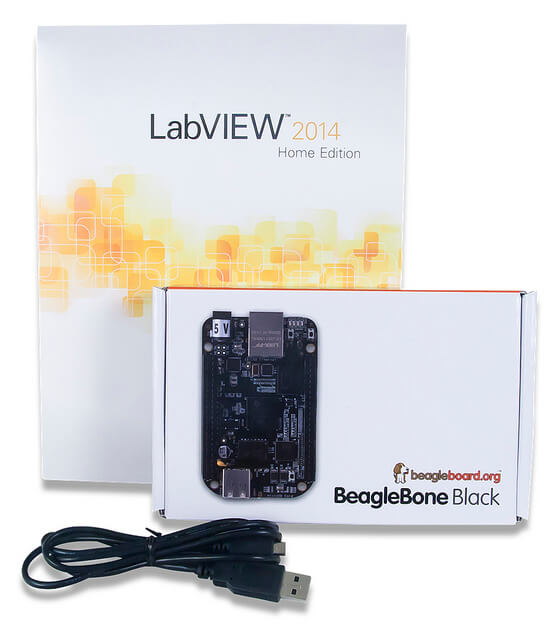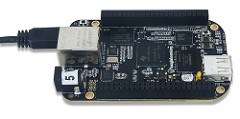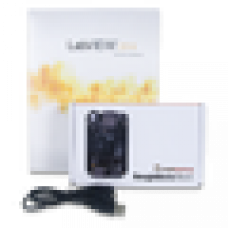LabVIEW Physical Computing Kit for BeagleBone Black
Product Description

The LabVIEW Physical Computing Kit for BeagleBone Black is no longer in production. Once the current stock is depleted, it will be discontinued. We recommend migration to the standalone LabVIEW Home Bundle.
The LabVIEW Physical Computing Kit includes the 32-bit version of LabVIEW Home and is compatible with Windows 10*/8.1/8/7/Vista/XP (32-bit and 64-bit). Not compatible with OS X.
LabVIEW is a graphical programming platform used for data acquisition & analysis, instrument control, prototyping and more. LabVIEW Home Bundle has made this powerful software affordable for makers and students. But what if you want to connect your LabVIEW projects to the physical world?
That's why we've created the Physical Computing Kits. This version of the kit includes the popular BeagleBone Black Rev. C platform, combined with LabVIEW Home Bundle, it provides an inexpensive yet versatile way to deploy LabVIEW to an unconnected target and interact with the physical world!
*NI does not officially support LabVIEW Home on Windows 10 because Windows 10 was released after LabVIEW Home. Digilent uses LabVIEW Home on Windows 10 regularly and has not found any compatibility issues.
 |
What's in the kit? This version of the Physical Computing Kit comes with:
|
|
Take your project beyond your computer! With the powerful ARM Cortex-A8 processor on board the BeagleBone Black, you are able to run Debian Linux, which turns your BeagleBone Black into a mini-computer. Having a computer at your disposal allows users to deploy LabVIEW, using LINX 3.0. Unlike microcontroller targets, which require a PC connection, once programmed, the BeagleBone Black can be disconnected and will remain running. Applications that would use the BeagleBone Black include: Robitics, remote sensor units, running large image processing walls (like our LED Display), and most projects that would require both a Raspberry Pi + a microcontroller. The BeagleBone Black is the best of both worlds! |
 |
| The BeagleBone Black is a powerful credit-card sized board that has a fast growing community and extensive capabilities! |
You'll also be able to quickly create your own graphical user interfaces. Does your project need switches, buttons, dials, numeric displays, or more? You'll be able to choose from hundreds of controls, graphs, and 3D visualization tools, then simply drag-and-drop them into place.

In LabVIEW, you can design your project's block diagram & graphical interface, all at once.
Now, imagine you want to expand your design. For instance, maybe you want to add a high / low temperature range or a digital temperature display. On a breadboard, it would mean adding parts, rewiring, testing, etc. In LabVIEW, experimentation like this is much, much more efficient.
Need help getting started?
You'll find a growing collection of tutorials and examples at LabVIEW MakerHub, including:
- A tutorial series for users new to LabVIEW and its interface
- A tutorial series specifically for the BeagleBone Black.
These tutorials can walk you through an introduction to the LabVIEW interface, programming examples, setting up your BeagleBone Black for deployment, connecting to I/O, and datalogging.
Enter the code in the box below:



